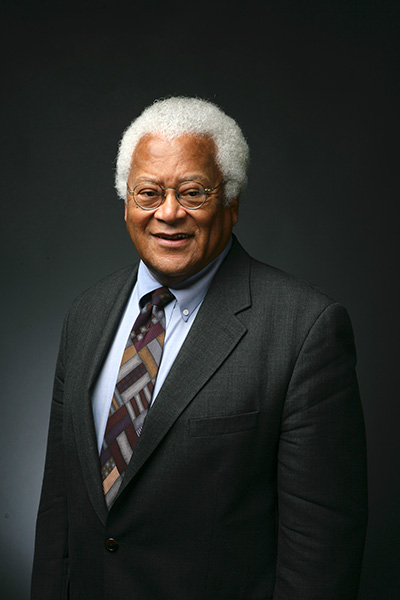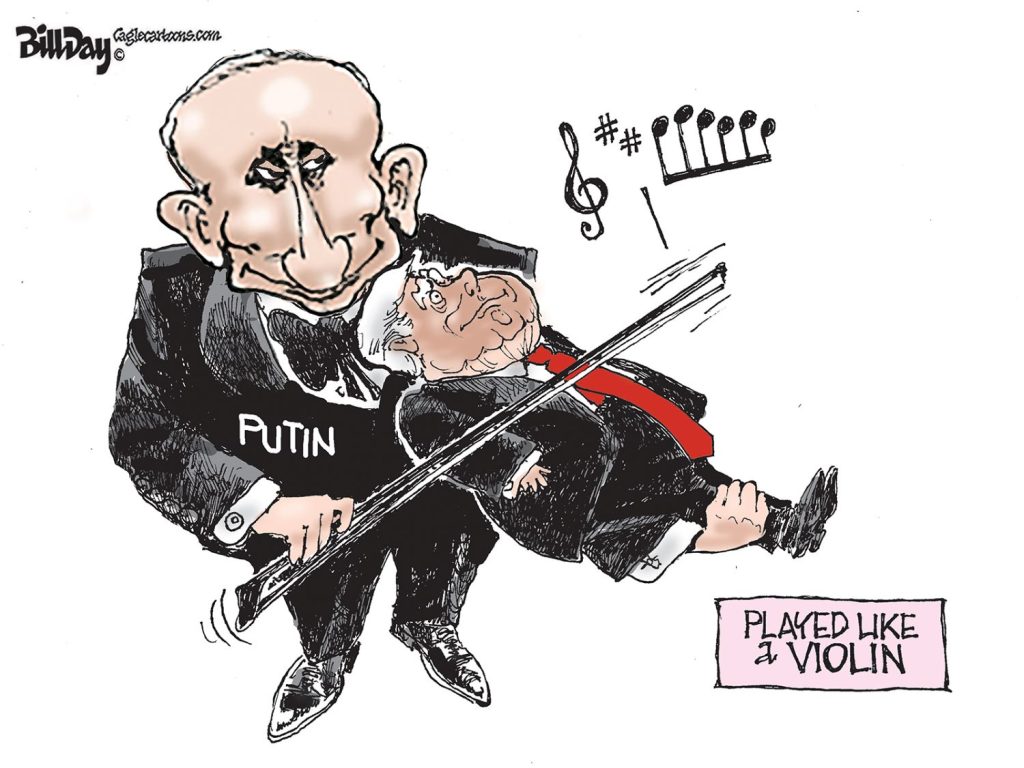All of us of a certain age have special memories of Rev. James Lawson, who died June 9 at the age of 95.
We remember his brilliant mind and commitment to civil disobedience that inspired leaders from Dr. Martin Luther King Jr. to generation after generation of human rights activists working in all facets of social justice.
We watched the impact of strategies that he mapped out to galvanize Memphis – and the nation – during the sanitation workers strike as people of good will were drawn to support his message and question the racism that defined city government policy.
We continued to see his activism after he had moved to Los Angeles whenever the cause was just, inspiration was needed, and virtuous ideals could play a role.
We were constantly reminded of his metaphysical understanding of the nature of existence in space and time and the relation between mind and matter, whether he was delivering his revelatory eulogy to a standing ovation at John Lewis’ funeral in 2020, being interviewed on national television, or in conversation.
Yes, he could formulate contemplative and meditative commentaries and explanations that could leave listeners speechless in their beauty but most of all, his goal was to arouse the impulse for action to repulse racism, sexism, and plantation capitalism.
Memphis knew him well and most Memphians revered his role in that most important chapter of our history. But we weren’t alone. His death was front page news in newspapers across the United States where he was called the greatest teacher of nonviolence resistance in the history of America.
Profiles in Courage
A few years ago when my dear friend Susan Adler Thorp and I were researching and organizing an exhibit about Rabbi James Wax, we were desperate to talk to Rev. Lawson because he and the rabbi often worked together to bring reason to the overt racism that erupted during the sanitation workers strike.
Rabbi Wax was president and Rev. Lawson was vice-president of the Memphis Ministers Association and they advocated for the group to publish in the daily newspapers on February 3, 1968, “An Appeal To Conscience,” a call for Memphians to observe Race Relations Sunday. The ministers association voted unanimously in favor of the document.
In part, it said: “The commandment to show respect for one another and to love each other is a moral obligation in every religious tradition. Failure to recognize this moral truth is failure to understand God’s law. Prejudice and discrimination are sinful, according to the ethics of the Judeo-Christian tradition…We earnestly and reverently ask the people of our community to look into their hearts and purge their souls of every vestige of prejudice and intolerance…we ask for an end to racial discrimination in all areas of human experience.”
These were bold words in 1968, especially with the storm clouds gathering. Memphis sanitation workers went on strike nine days later, demanding a decent living wage, safe working conditions, and recognition of their humanity and dignity. The response from Memphis Mayor Henry Loeb was recalcitrance and racist rhetoric. As tensions deepened in Memphis, the rabbi and the reverend worked together in hopes of averting violence and encouraging a settlement but it was not to be.
Dr. King was murdered on April 4 by a sniper in downtown Memphis. The next day, the ministers, including Rev. Lawson and Rabbi Wax, met at St. Mary’s Episcopal Cathedral to discuss next steps. It resulted in Rabbi Wax leading a procession of about 150 ministers from St. Mary’s Episcopal Cathedral down Poplar Avenue to City Hall. There, Rabbi Wax’s outrage boiled over and his contempt for Memphis Mayor Henry Loeb was expressed in a powerful condemnation broadcast on national television.
Both Rev. Lawson and Rabbi Wax received hundreds of threats on their lives and even more vicious letters. Because of their work together, Ms. Thorp and I wanted to contact Rev. Lawson so we could capture his sentiments in the exhibit, Righteous Among Men: Rabbi James A. Wax, A Life Dedicated to Social Justice. The exhibit has now been translated into a digital format and is now online. The rabbi’s comments to the mayor can be seen in the April 5, 1968, section.
First Cousins
We were unsure if we could be successful in reaching Rev. Lawson, but with the help of Mark Matheny, longtime Methodist minister and President of the Board for the United Methodist Neighborhood Centers of Memphis, we scheduled a time to talk.
Part of that conversation is featured in the Rabbi Wax exhibit. Asked about their relationship, Rev. Lawson replied:
“Social justice was a theme that came straight from the Hebrew Bible into the Scriptures, and one of our models for nonviolent resistance – justice, liberty, equality, and the beloved community. It’s what joined Rabbi Wax and me. For me, Rabbi Wax was a fellow prophet out of the Moses tradition, the Micah tradition. We treated each other as first cousins of the Hebrew prophets.”
A Special Conversation and Memories
Here’s more from that conversation with Rev. Dr. James M. Lawson Jr.:
I met Rabbi Wax when I became pastor of Centenary United Methodist Church in June, 1962. I knew about the interdenominational ministers conference (where Rabbi Wax would serve as president) and its role in desegregating things in Memphis before I moved there so I decided it was to be one of my monthly meetings.
There I met Rabbi Wax. There was a certain amount of Christian-Jewish conversations but not much going on between White and Black clergy. We were colleagues to each other. I was already very much in the camp biblically and allegorically that Jesus was a Jew; none of the nonsense going on in Christianity today. I had studied a lot about the Hebrew Bible since before I was 10 years of age.
I only participated in ministers association as a member. I was a vice-president once. Some white pastors got in trouble with that. The pastor at Second Presbyterian was fired because the elders in the church accused him of being a friend with Jim Lawson.
I had conversations with Rabbi Wax in that period but I left it to other Black clergy to be more out front in the public work. I didn’t give speeches. I didn’t give press conferences. I was more the strategist, the nuts and bolts guy working on boycotts and marches and nonviolent resistance.
I knew James Wax as the part of the community talking to Mayor Loeb and to White businessmen vocal about ending the strike. James Wax was very active in that process, pushing to change Memphis.
I always spoke about nonviolent resistance and lessons from the Hebrew Bible that I discussed with him.
I was in the meeting at St. Mary’s Cathedral on April 5, 1968. There were 75-125 clergy there. I spoke in that meeting as did other pastors. (St. Mary’s Cathedral) Dean (William) Dimmick and Rabbi Wax were two major voices urging them to go to the mayor’s office. I think Rabbi Wax may have even come to the meeting knowing that was what he was going to do. I walked in procession down Poplar Avenue with them, but I didn’t go into the meeting at City Hall with the mayor because I wasn’t really needed. They knew what to do. The racism of the time was serious and dangerous.
The clergy that went into City Hall were courageous.
My connections with James Wax were more my connections to prophetic religions and the high form of religion that it represented to me. I never supported the hijacking of the Old Testament and twisting it into the salvation system that it had already become and that continues even more today. We treated each other as first cousins of the Hebrew prophets.
On more than one occasion, Rabbi Wax came to Centenary (Church) on Good Friday and participated in our lightly attended service and devotional that was a reflection on Jesus’ seven last words: My God, why have you forsaken me? Rabbi Wax even provided a meditation on Psalm 22 which began with the same words. It was a phenomenon for me that he would come, cementing our awareness of Jesus through the tradition of reform Judaism.
Rabbi Wax represented the connection we had because he knew the Bible and the God of Moses and Jesus. Social justice was a theme that came straight from the Hebrew Bible into the Scriptures. One of our models in nonviolent resistance was justice, liberty and equality and the beloved community (which Dr. King spoke about). It is very much a part of it all and it’s what joined Rabbi Wax and me.
There were only a few Baptist pastors in the ministerial association. White Baptist pastors had their own association, and when Rabbi Wax became president of the ministerial association, they were critical of his presence because of their White nationalist beliefs. They loudly criticized him. For me, my connection with Rabbi Wax was as a fellow prophet out of the Moses tradition, the Micah tradition.
**
Note: Memphian Emily Yellin had been working with Lawson on his memoir, “Nonviolent,” which is scheduled to be published next year by Random House.
**
Join me at the Smart City Memphis Facebook page and on Instagram where these blog posts are published along with occasional articles, reports, and commentaries that are relevant to Memphis.
͏ ͏ ͏ ͏ ͏ ͏ ͏ ͏ ͏ ͏ ͏ ͏ ͏ ͏ ͏ ͏ ͏ ͏ ͏ ͏ ͏ ͏ ͏ ͏ ͏ ͏ ͏ ͏ ͏ ͏ ͏ ͏ ͏ ͏ ͏ ͏ ͏ ͏ ͏ ͏ ͏ ͏ ͏ ͏ ͏ ͏ ͏ ͏ ͏ ͏ ͏ ͏ ͏ ͏ ͏ ͏ ͏ ͏ ͏ ͏ ͏ ͏ ͏ ͏ ͏ ͏ ͏ ͏ ͏ ͏ ͏ ͏ ͏ ͏ ͏ ͏ ͏ ͏ ͏ ͏ ͏ ͏ ͏ ͏ ͏ ͏ ͏ ͏ ͏ ͏ ͏ ͏ ͏ ͏ ͏ ͏ ͏ ͏ ͏ ͏ ͏ ͏ ͏ ͏ ͏ ͏ ͏ ͏ ͏ ͏ ͏ ͏ ͏ ͏ ͏ ͏ ͏ ͏ ͏ ͏ ͏ ͏ ͏ ͏ ͏ ͏ ͏ ͏ ͏ ͏ ͏ ͏ ͏ ͏ ͏ ͏ ͏ ͏ ͏ ͏ ͏ ͏ ͏ ͏ ͏ ͏ ͏ ͏ ͏ ͏ ͏ ͏ ͏ ͏ ͏
.




